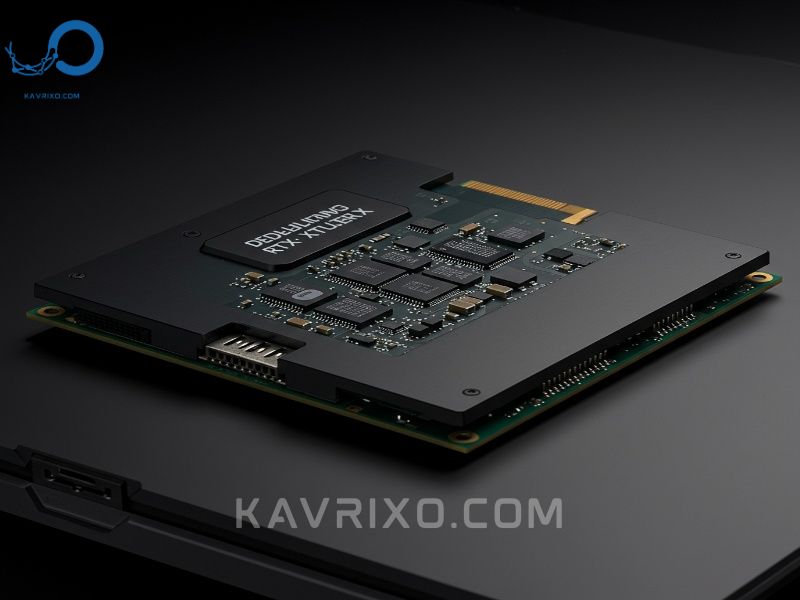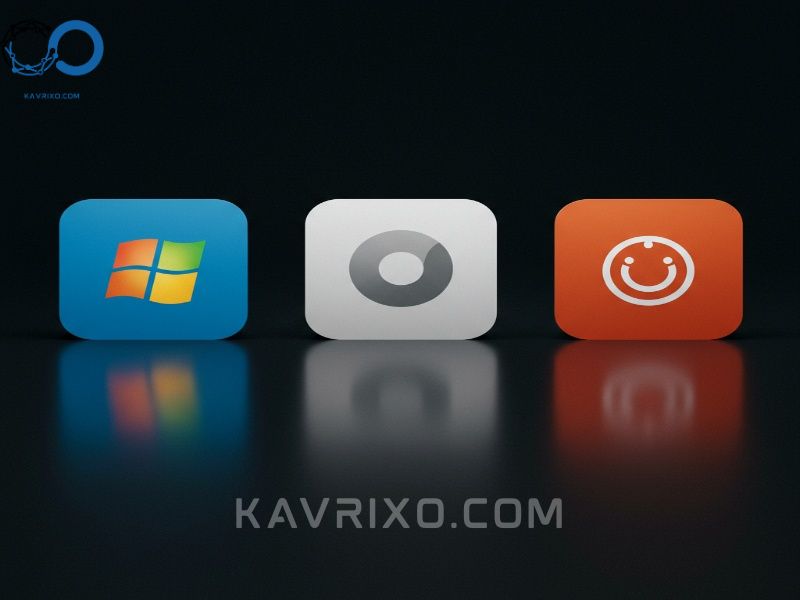If you’re reading this, chances are you’re about to embark on the exciting, often frustrating, but ultimately rewarding journey of data science. Maybe you’re a student diving into Python and Pandas, or perhaps you’re a seasoned professional looking to upgrade your mobile workstation. Whatever your situation, you know one thing for certain: data science demands power.
Choosing the best laptop for data science isn’t like buying a standard laptop for browsing or word processing. We aren’t just running spreadsheets; we’re training neural networks, manipulating massive datasets (think gigabytes, not megabytes), and running complex simulations that can bring lesser machines to a screeching, overheated halt.
I’ve spent years working in this field, and I’ve seen countless hours wasted due to inadequate hardware. My goal here is to guide you, step-by-step, through the critical specifications, common pitfalls, and ultimately, help you find the best laptop for a data scientist that fits your specific needs and budget. We’re going to dig deep into the CPU, RAM, and GPU requirements so you can make an informed decision and stop waiting for models to compile.

Contents
- 1 Why Your Hardware Matters in Data Science
- 2 The Unholy Trinity: Key Hardware Requirements for a Data Scientist
- 3 Beyond Power: Storage, Display, and Portability
- 4 Our Top Picks: The Best Laptops for Data Science (Categorized)
- 5 Practical Advice: Optimizing Your Workflow
- 6 Final Thoughts on Securing Your Best Computer for Data Science
Why Your Hardware Matters in Data Science
Before we dive into specs, let’s understand why data science is so computationally intensive.
Data science, particularly its advanced subset, machine learning (ML), involves iterative numerical computation. When you load a 10GB dataset into memory, every time you run a transformation, calculate a correlation matrix, or train a model (especially deep learning models), your machine is taxed heavily.
The time factor is critical. If your laptop takes 30 minutes to train a model that should take 5 minutes on better hardware, you’ve just lost 25 minutes of productive time. Multiply that across dozens of iterations a day, and you quickly realize that investing in the best computer for data science is an investment in your career efficiency.
We need a machine optimized for parallel processing, high-speed data access, and massive memory capacity. Forget the fancy ultra-thin chassis if it means thermal throttling after 15 minutes of hard work—we prioritize raw, sustained performance.
The Unholy Trinity: Key Hardware Requirements for a Data Scientist
When evaluating a potential machine, we must focus on the three pillars of computational performance: the CPU, the RAM, and the GPU. These components dictate how quickly you can process data and how complex your models can become.
CPU: The Brain of Your Data Analysis Laptop
The Central Processing Unit (CPU) handles the general workflow, data preprocessing (cleaning, feature engineering), and running lighter, traditional machine learning algorithms like linear regression or decision trees.
Cores vs. Clock Speed: What Truly Matters?
For data science tasks, particularly those involving parallel libraries like NumPy or scikit-learn (which often utilize multi-threading), core count is generally more important than clock speed, up to a point.
- Core Count: Aim for at least a modern Intel i7 or AMD Ryzen 7. For serious work, I highly recommend looking at chips with 8 physical cores or more. More cores mean you can handle multiple processes simultaneously, which is essential when you are preprocessing data while simultaneously running a small test model in the background.
- Architecture: Stick to the latest generations (e.g., Intel 13th/14th Gen or AMD Ryzen 7000/8000 series). Newer architectures offer significant improvements in power efficiency and single-core performance, which benefits the sequential tasks that still exist in our workflow.
- Performance vs. Efficiency Cores (P-cores vs. E-cores): Modern Intel chips split cores. For the best laptop for machine learning, you want the P-cores (Performance cores) to be plentiful, as these are the heavy lifters for intensive computation.
My expert recommendation? Look for a CPU that balances high core count (6-8 P-cores minimum) with strong single-core performance, ensuring quick execution of both parallel and sequential tasks.
RAM: Never Skimp on Memory
If the CPU is the brain, the Random Access Memory (RAM) is the short-term working space. Data scientists often deal with large files that need to be loaded entirely into RAM for quick manipulation. If you run out of RAM, your operating system starts using slower disk space (paging/swapping), leading to crippling performance degradation.
The 16GB Minimum vs. 32GB Sweet Spot
This is where many beginners try to save money, and it’s a mistake I strongly advise against.
- 16GB (The Absolute Minimum): This is acceptable only if you are strictly working with small datasets (under 5GB) and running introductory projects. If you plan on using large language models (LLMs) or complex image processing datasets, 16GB will bottleneck you immediately.
- 32GB (The Professional Standard): This is the sweet spot for the serious data scientist. With 32GB of RAM, you can comfortably load medium-to-large datasets, run multiple Jupyter notebooks simultaneously, keep several browser tabs open (which we all do!), and still have room for your operating system. This is the minimum I recommend if you want your laptop for data science to last for several years.
- 64GB (The Deep Learning Specialist): If your work involves massive enterprise data dumps, large-scale graph analysis, or very memory-intensive deep learning models that you can’t offload to cloud services, 64GB might be justified. However, for most users, 32GB is sufficient.
Crucial Tip: Always check if the RAM is soldered (permanent) or upgradeable. If you choose a 16GB model that is upgradeable, you can save money now and upgrade to 32GB later. If it’s soldered, choose 32GB upfront!

GPU: Accelerating Machine Learning and Deep Learning
While the CPU handles traditional stats and preprocessing, the Graphics Processing Unit (GPU) is the powerhouse for modern machine learning, especially deep learning (neural networks, computer vision, natural language processing).
GPUs excel at parallel computation, executing thousands of simple math operations simultaneously—exactly what training a neural network requires. If you are serious about becoming a machine learning engineer, the GPU is non-negotiable.
NVIDIA Dominance and CUDA Requirements
When shopping for the best laptop for machine learning, you must focus almost exclusively on NVIDIA GPUs. Why?
- CUDA: NVIDIA developed the CUDA platform, which is the industry standard for accelerated computing. Frameworks like TensorFlow and PyTorch are optimized to run seamlessly on CUDA-enabled GPUs.
- Ecosystem: The entire ML ecosystem—from pre-trained models to open-source libraries—is built around NVIDIA hardware. While AMD and Apple Silicon are making strides, they often require more complex setup and lack the plug-and-play compatibility that NVIDIA offers.
What GPU should you target?
- Minimum Entry: NVIDIA RTX 3050 or 4050 (6GB VRAM minimum). This provides enough VRAM (Video RAM) to run small introductory deep learning projects.
- Recommended Professional: NVIDIA RTX 4070 or 4080 (8GB to 12GB VRAM). This is the sweet spot for professional deployment, offering substantial VRAM and power efficiency for complex models.
- The Powerhouse: RTX 4090 (16GB+ VRAM). If you plan to work on state-of-the-art LLMs or high-resolution image processing locally, this is the top-tier choice for a truly exceptional experience.
Remember, the VRAM (the memory on the GPU) is crucial. It dictates the maximum size of the model and the batch size you can use during training. Never prioritize a slightly better CPU over a significantly better GPU when deep learning is your focus.

Beyond Power: Storage, Display, and Portability
Once we’ve locked down the CPU, RAM, and GPU, we need to consider the secondary factors that impact workflow, reliability, and comfort.
Storage Solutions: SSD is Mandatory
If you are still using a mechanical Hard Disk Drive (HDD) for your primary storage in 2025, you are seriously limiting your potential as a data scientist.
Speed and Capacity: NVMe is King
- Speed (NVMe SSD): You must have a Solid State Drive (SSD), and specifically, an NVMe (Non-Volatile Memory Express) SSD. NVMe drives connect directly to the PCIe bus, offering speeds 5-10 times faster than older SATA SSDs. This speed is critical for loading massive datasets quickly and reducing I/O bottlenecks. When working with data, you are constantly reading and writing, and slow storage will throttle even the fastest CPU/RAM combination.
- Capacity: Data files grow exponentially. I recommend a minimum of 1TB NVMe SSD. 512GB fills up instantly once you install the OS, development environments (Anaconda, Docker), and a few large datasets. If you frequently handle geospatial or large video data, consider 2TB.
Pro Tip: If budget is tight, get a laptop with a smaller primary NVMe (512GB) for the OS and applications, and ensure there is an available slot to add a second, larger 1TB or 2TB drive later for pure data storage.
Operating System: Windows, macOS, or Linux?
The choice of OS often sparks lively debate among data scientists. Each has its pros and cons, especially when choosing the best data analysis laptop.
The Data Scientist’s OS Debate
| Operating System | Pros | Cons | Ideal User |
|---|---|---|---|
| Windows | Excellent hardware compatibility (especially NVIDIA GPUs). Best for gaming/ML overlap. Very easy setup for most tools. | Can have minor dependency issues compared to Linux. Windows Subsystem for Linux (WSL2) is required for seamless development. | Users prioritizing maximum performance for dollar, or those needing NVIDIA compatibility. |
| macOS (Apple Silicon) | Exceptional battery life and thermal management. M-series chips (M1/M2/M3) offer fantastic CPU/RAM performance for general data processing. Beautiful hardware. | GPU compatibility is complex. TensorFlow/PyTorch integration requires specialized Apple Metal optimization (less universal than CUDA). Expensive, especially for high RAM. | Data Analysts, professionals prioritizing portability, or those whose work is primarily CPU-bound (Pandas, Excel, visualization). |
| Linux (Ubuntu/Fedora) | Native environment for most open-source ML tools and servers. Unmatched control and minimal overhead. | Steeper learning curve. Hardware support (drivers, sleep mode) can sometimes be finicky on consumer laptops. | Experienced developers, those managing cloud/server deployments, and power users. |
My Verdict: If you are focused purely on deep learning using dedicated GPUs, Windows is often the path of least resistance due to plug-and-play NVIDIA/CUDA support. If you are focused on general data analysis and portability, Apple Silicon is a strong contender, provided you recognize its limitations for cutting-edge deep learning.

Display and Ergonomics: The Long Haul Factor
We spend countless hours staring at code, charts, and terminal windows. Don’t overlook the factors that affect your comfort and productivity.
- Display Size and Resolution: I strongly recommend a 15-inch or 16-inch screen. 13-inch devices are too cramped for complex coding environments. QHD (2560×1440) or 4K resolution is nice, but 1080p (FHD) is often better for performance and battery life, especially on smaller screens. If you get 4K, be prepared for scaling issues with some older data science applications.
- Keyboard Quality: A comfortable, full-sized keyboard is essential. If you spend all day typing code, a mushy keyboard is a recipe for frustration and fatigue.
- Cooling System: This is perhaps the most overlooked feature on the best computer for data science. High core counts and powerful GPUs generate massive heat under load. A poorly cooled laptop will “throttle,” dramatically reducing performance to prevent damage. Look for laptops with large vents, robust heat pipes, and good reviews regarding sustained performance under stress.
Our Top Picks: The Best Laptops for Data Science (Categorized)
To help simplify your search for the best laptop for data science, I’ve broken down the recommendations into three tiers based on typical use cases and budget constraints.
Tier 1: The Budget-Conscious Data Analyst (Under $1500)
This tier is suitable for students, beginners, and professionals focused mainly on standard statistical modeling and smaller datasets.
- CPU: Intel i5 (latest generation) or AMD Ryzen 5/7 (6 cores minimum).
- RAM: 16GB (must be upgradeable if possible).
- GPU: Integrated graphics (Intel Iris Xe or AMD Radeon) or a very entry-level dedicated GPU (e.g., RTX 3050 4GB).
- Focus: Excellent CPU and sufficient RAM for Pandas, SQL, and introductory Python work. Deep learning is best done via cloud resources (like Google Colab) at this level.
Tier 2: The Professional Machine Learning Engineer (The Sweet Spot)
This is the ideal balance of performance, portability, and cost. It’s what I recommend for the vast majority of working data scientists and ML engineers who need the flexibility to run complex tasks locally.
- CPU: Intel i7 or AMD Ryzen 7 (8 performance cores minimum).
- RAM: 32GB DDR5. Non-negotiable.
- GPU: NVIDIA RTX 4070 (8GB VRAM minimum). This offers the best price-to-performance ratio for mid-range deep learning.
- Storage: 1TB NVMe SSD.
- Focus: Sustained performance, handling large ETL pipelines, running mid-sized neural networks, and maintaining high multitasking efficiency.

Tier 3: The Deep Learning Powerhouse (No Holds Barred)
If your budget is flexible and your primary job involves iterating rapidly on state-of-the-art models, this is the tier for you. These are often heavier and more expensive but offer desktop-level performance.
- CPU: Intel i9 (HX series) or AMD Ryzen 9 (highest core count available).
- RAM: 64GB DDR5.
- GPU: NVIDIA RTX 4080 or 4090 (12GB VRAM minimum, preferably 16GB+).
- Storage: 2TB NVMe SSD (Gen 4 or better).
- Focus: Maximum speed, ability to train large models locally, professional-grade cooling systems, and future-proofing for the most demanding tasks. This is truly the best computer for data science available in a mobile form factor.
Practical Advice: Optimizing Your Workflow
Buying the right hardware is only half the battle. To maximize the performance of your laptop for data science, you need to optimize your software environment.
Leveraging Cloud and Hybrid Workflows
Even with a top-tier laptop, there will be times when a model requires more power than any mobile device can offer (e.g., training a massive transformer model for days).
Don’t be afraid of hybrid computing. Use your powerful local machine for preprocessing, feature engineering, code development, and visualization. When it comes time for multi-hour training runs, push the job to a cloud service like AWS SageMaker, Google Colab Pro, or Azure ML. This approach saves battery life, reduces wear and tear on your laptop, and gives you access to specialized hardware (like A100 GPUs) when needed.
Virtualization and Containerization (Docker and WSL2)
To keep your environment clean and reproducible—a core tenet of good data science—utilize containerization.
- Docker: Learn to use Docker containers. They allow you to package your code, dependencies, and environment into isolated units. This means you avoid the dreaded “it works on my machine” problem, and it ensures perfect reproducibility when moving models to production servers.
- WSL2 (Windows Users): If you are on Windows, installing the Windows Subsystem for Linux (WSL2) is mandatory. It provides a near-native Linux environment, simplifying the installation and running of specialized data science tools that often prefer Linux. You can even access your NVIDIA GPU directly from within the WSL2 environment, marrying the ease of Windows with the compatibility of Linux.
Thermal Management and Maintenance
A powerful laptop generates heat. To ensure your machine maintains peak performance (and longevity), follow these maintenance steps:
- Cooling Pad: Invest in a quality laptop cooling pad. It elevates the machine, allowing better airflow to the intake vents, and often provides additional active cooling via fans. This is a cheap way to prevent thermal throttling during long ML training sessions.
- Monitor Temperatures: Use tools like HWMonitor to keep an eye on your CPU and GPU temperatures. If they consistently hit 95°C or higher, your performance is being limited, and you might need to adjust your laptop’s power settings or clean the vents.
- Dust Regularly: Dust buildup is the enemy of performance. Every 6-12 months, if you are comfortable doing so, open the laptop and use compressed air to clean dust from the heatsinks and fans.
Final Thoughts on Securing Your Best Computer for Data Science
The journey to finding the best laptop for data science is highly personal, but the core requirements remain universal: prioritize components that handle massive parallel computation and large memory demands.
Remember, this isn’t just a purchase; it’s an investment in your productivity. A few hundred dollars more spent on doubling your RAM or upgrading your GPU VRAM today will save you countless hours of waiting (and frustration) over the lifespan of the machine.
Whether you choose a sleek macOS machine for analytical portability or a powerful Windows/NVIDIA powerhouse for deep learning, focus on the specs we outlined: a high core count CPU, 32GB+ of RAM, and a powerful, CUDA-compatible NVIDIA GPU.
Happy modeling! We look forward to seeing the amazing things you achieve with your newly optimized workstation.

